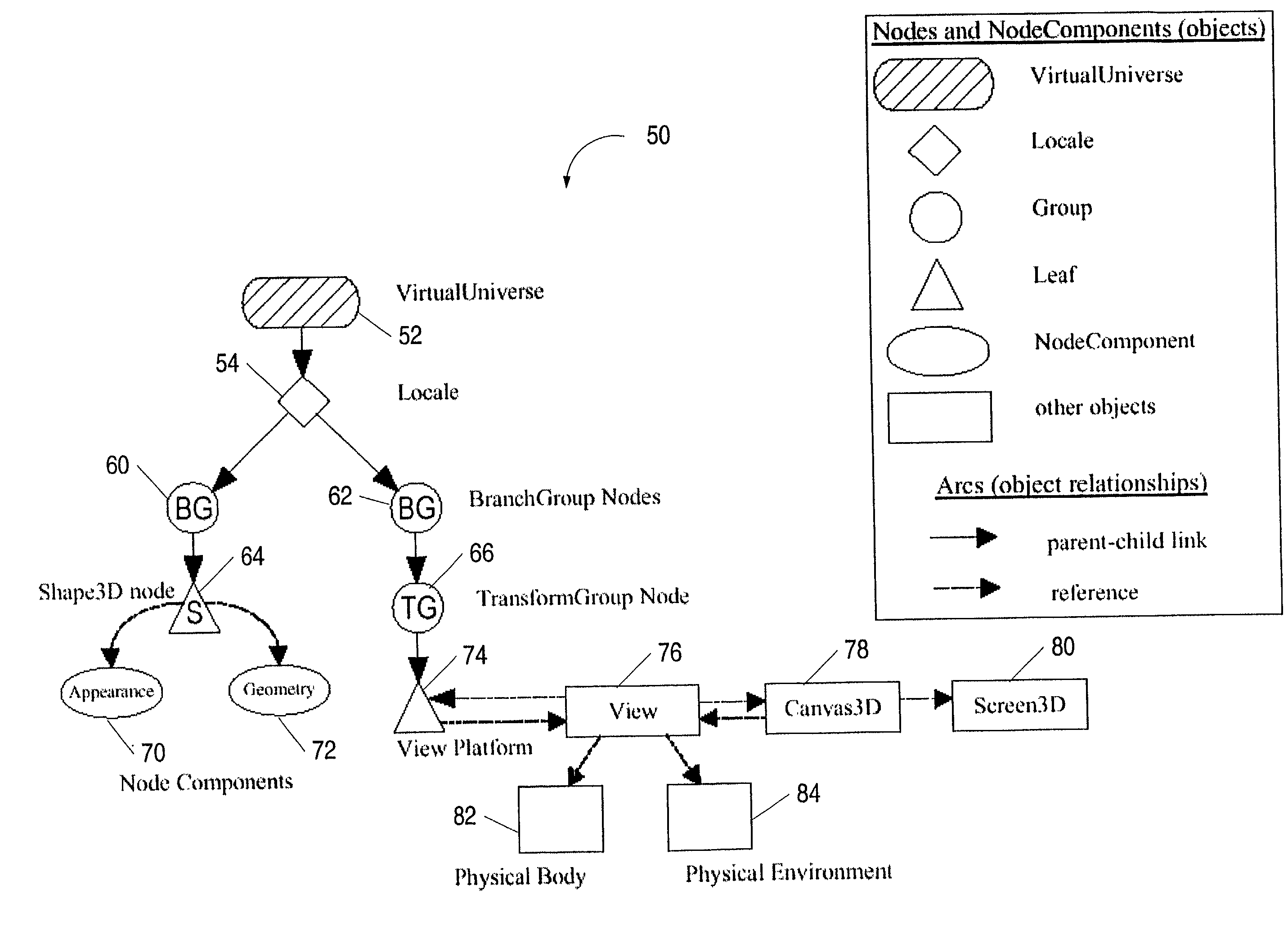Managing scene graph memory using data staging
a scene graph and data staging technology, applied in the field of computer graphics, can solve problems such as inability to wait, significant shortcomings, and inability to meet the needs of users,
- Summary
- Abstract
- Description
- Claims
- Application Information
AI Technical Summary
Problems solved by technology
Method used
Image
Examples
Embodiment Construction
[0023] FIG. 1: Scene Graph
[0024] Turning now to FIG. 1, one embodiment of a scene graph 50 is shown. In this example, scene graph 50 is created from instances of Java 3D classes, but other types of scene graphs are also possible and contemplated (e.g., VRML scene graphs). Scene graph 50 is assembled from objects that define the geometry, sound, lights, location, orientation, and appearance of visual and non-visual objects (e.g., sounds) that are part of a 3D or virtual world.
[0025] As illustrated in the figure, scene graph 50 may be thought of as a data structure having nodes and arcs. A node represents a data element, and an arc represents the relationship between data elements. In the figure, nodes 54-66 and 74 of scene graph 50 are the instances of Java 3D classes. The arcs represent two types of relationships between the Java 3D class instances. The first type of relationship is a parent-child relationship. For example, in this embodiment a group node such as branch group node 6...
PUM
 Login to View More
Login to View More Abstract
Description
Claims
Application Information
 Login to View More
Login to View More - R&D
- Intellectual Property
- Life Sciences
- Materials
- Tech Scout
- Unparalleled Data Quality
- Higher Quality Content
- 60% Fewer Hallucinations
Browse by: Latest US Patents, China's latest patents, Technical Efficacy Thesaurus, Application Domain, Technology Topic, Popular Technical Reports.
© 2025 PatSnap. All rights reserved.Legal|Privacy policy|Modern Slavery Act Transparency Statement|Sitemap|About US| Contact US: help@patsnap.com



